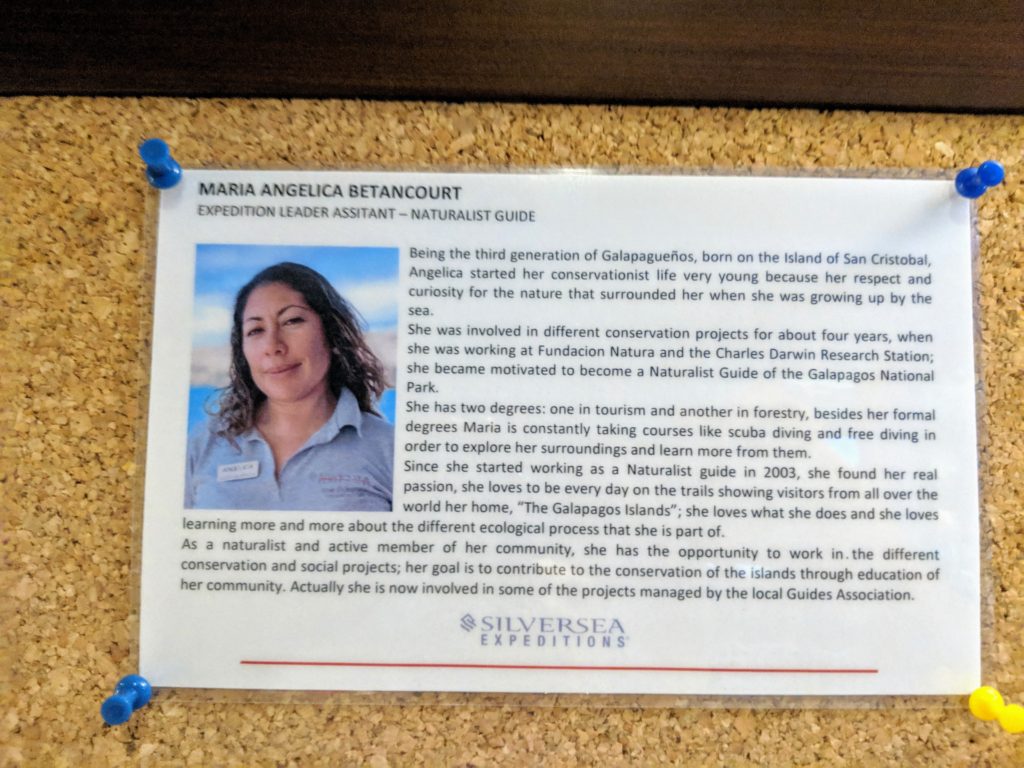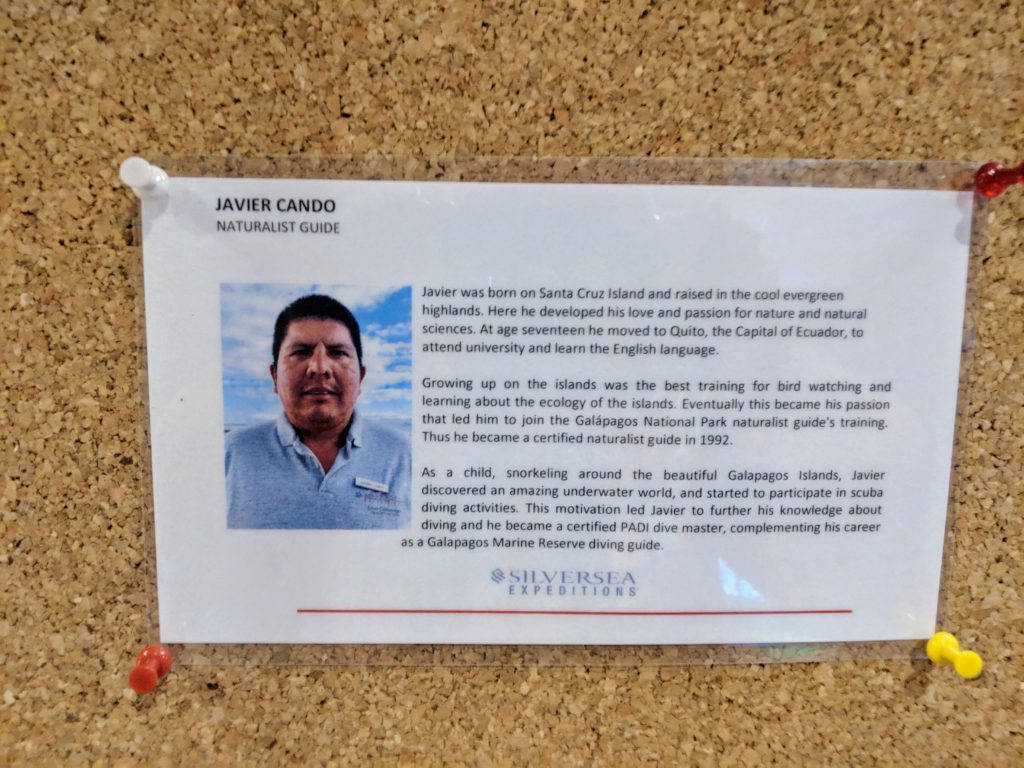Galapagos Giant Tortoise
Today's treat is a meeting with a giant tortoise. We are at our final island - Santa Cruz. Baltra, from which we will depart the next morning is just north of Santa Cruz (virtually adjacent to it). If you missed it, here's our previous post.
Coffee and the Galapagos giant tortoise
The morning was split though both excursions were in the highlands of Santa Cruz. Sue went on a Coffee Bean plantation called Montemar. And while the coffee tasting was excellent, so was the story beind the coffee farm. The plantation is organic and fully sustainable. They've developed their own quick composting style suitable to the hot weather as well as adopted cooling techniques for the buildings.
The owners did a long TED talk about how they've created a sustainable environment. The video is in Spanish with English subtitles. Much of the tour was about the sustainability features they've included. But also about the giant tortoises that roam the grounds.
-
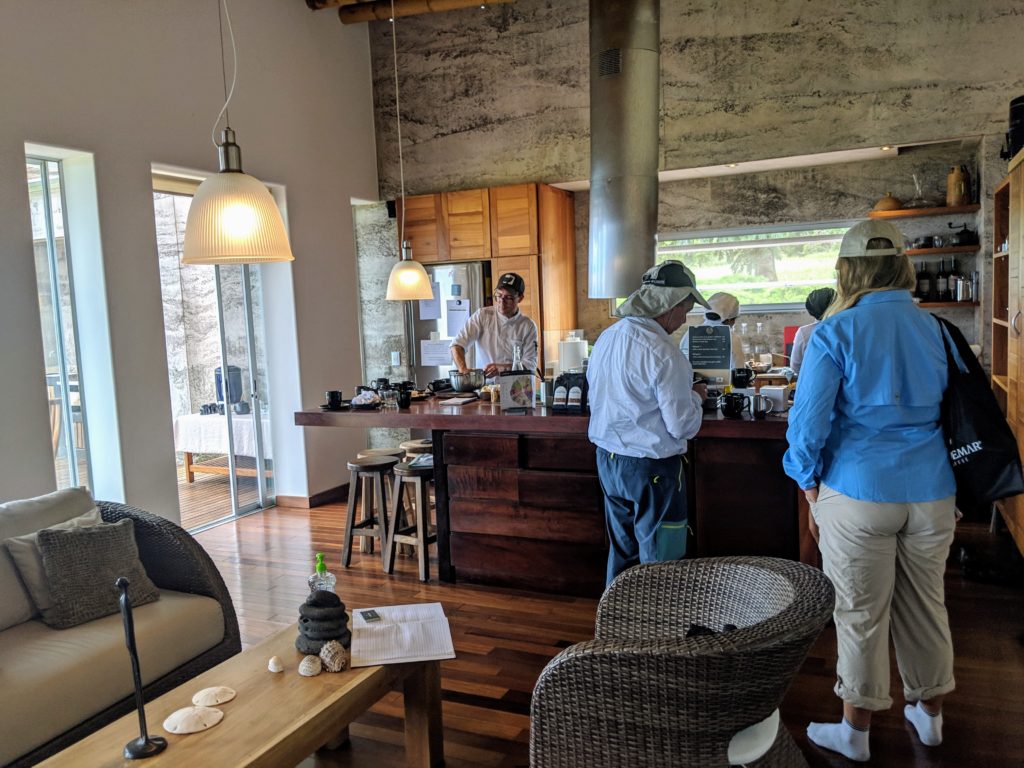
Coffee tasting -
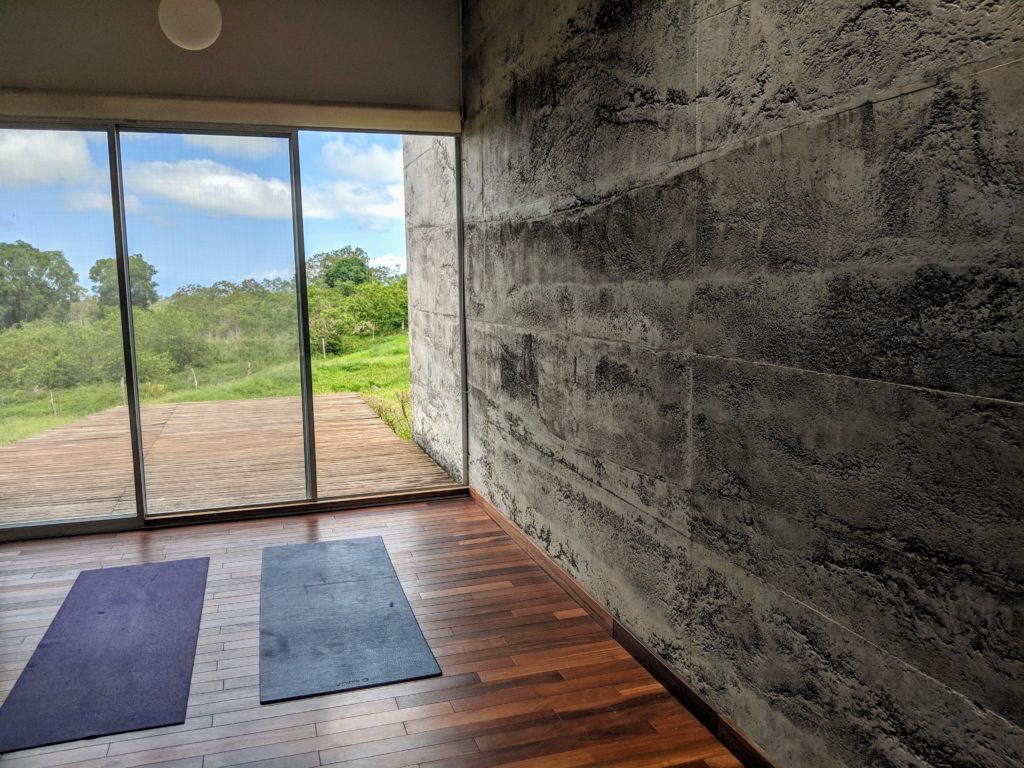
Passive Solar techniques -
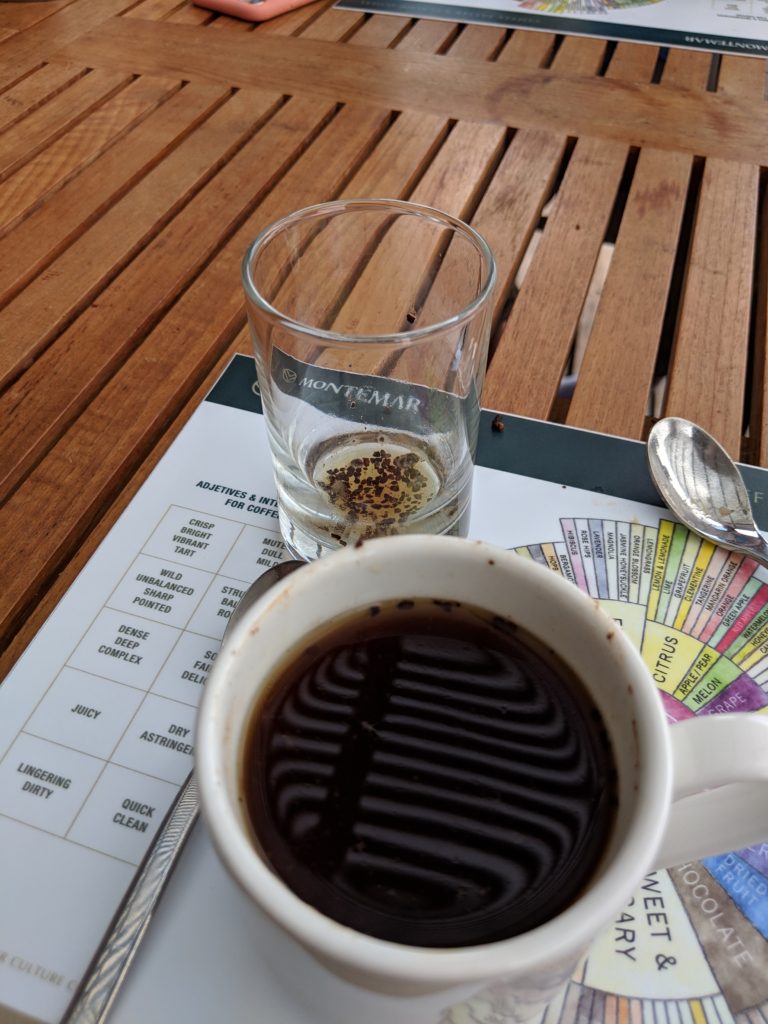
Love the coffee
Giant tortoise walking
-
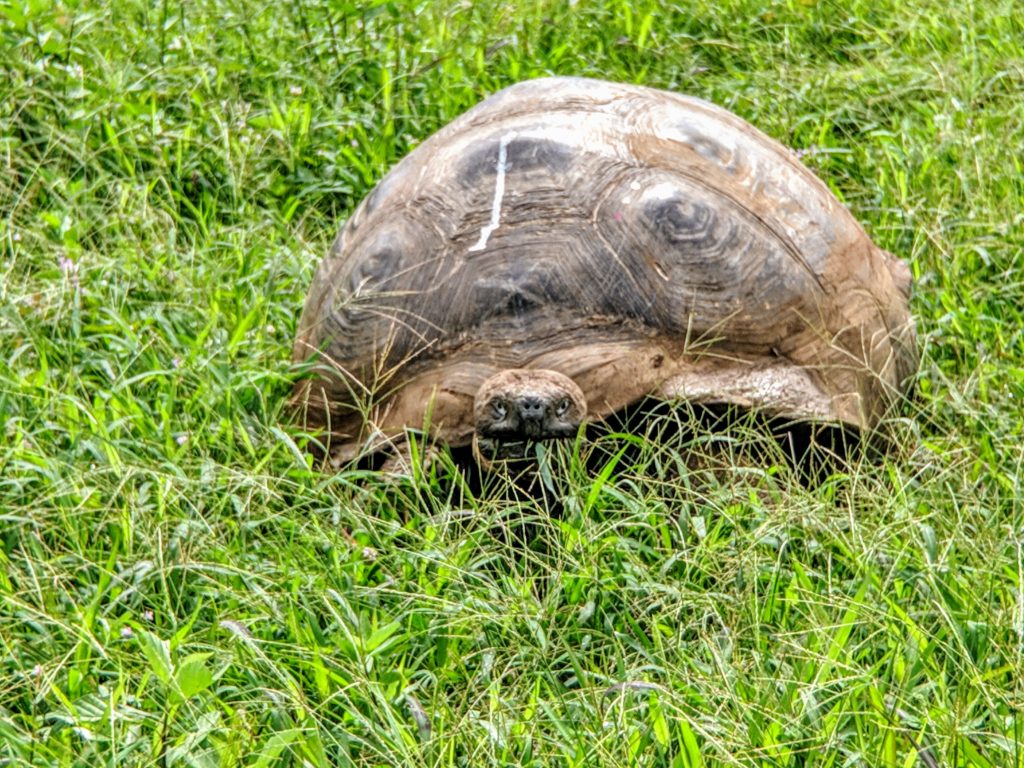
-
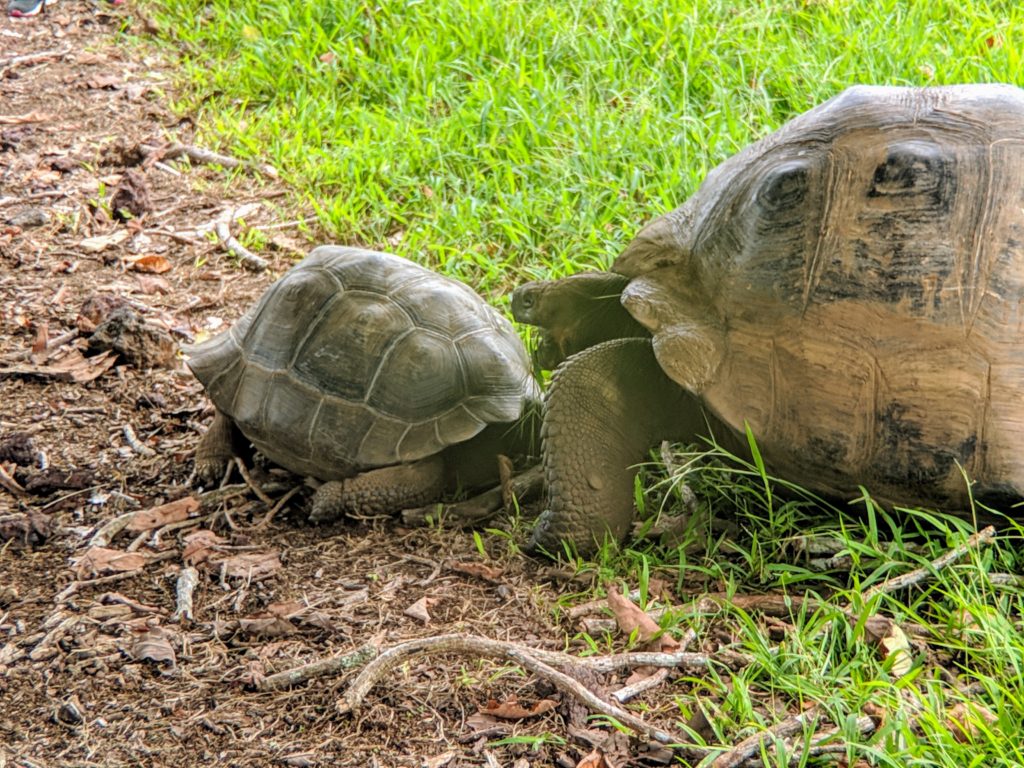
The smaller tortoise would not move, so the large one pushed forward. They don't back up
Galapagos Giant Tortoise highlands
Dave went to the tortoise reserve and breeding ground (El Chato Ranch). This large private foundation carefully takes care of the giant tortoises. These giants mate only once per year in the highlands while the female lays the eggs on the lowlands. The lush highlands have all the food needed but it takes 1 month for each tortoise to travel from high to lowlands.
-
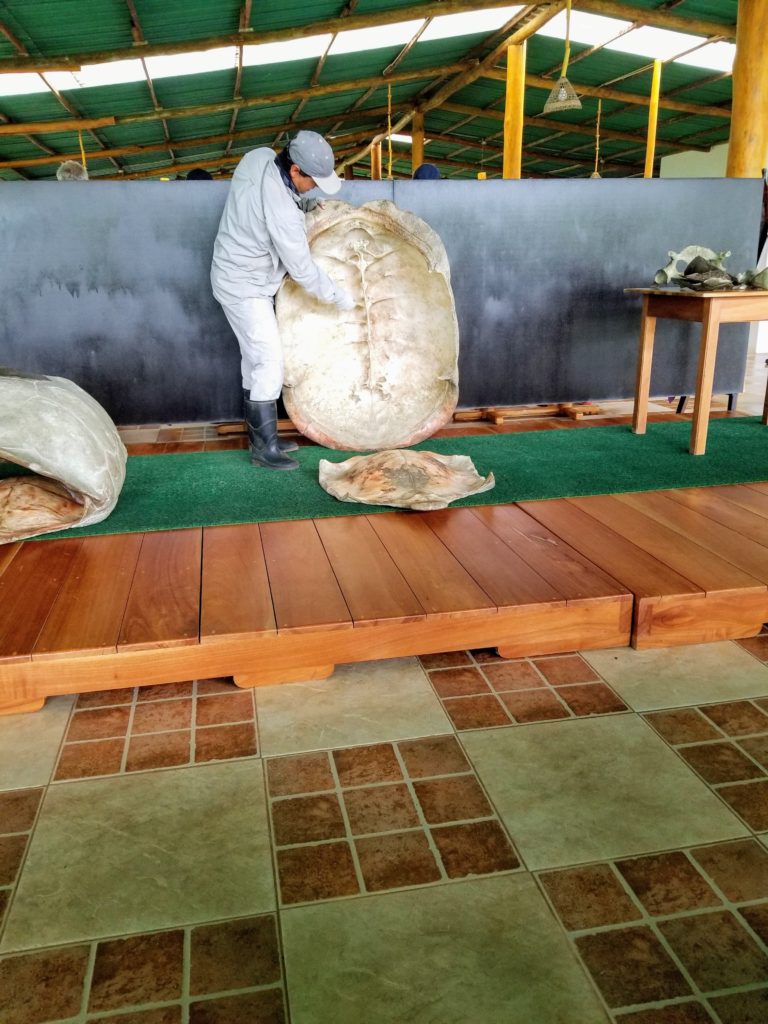
Our guide describing how the shell attaches -
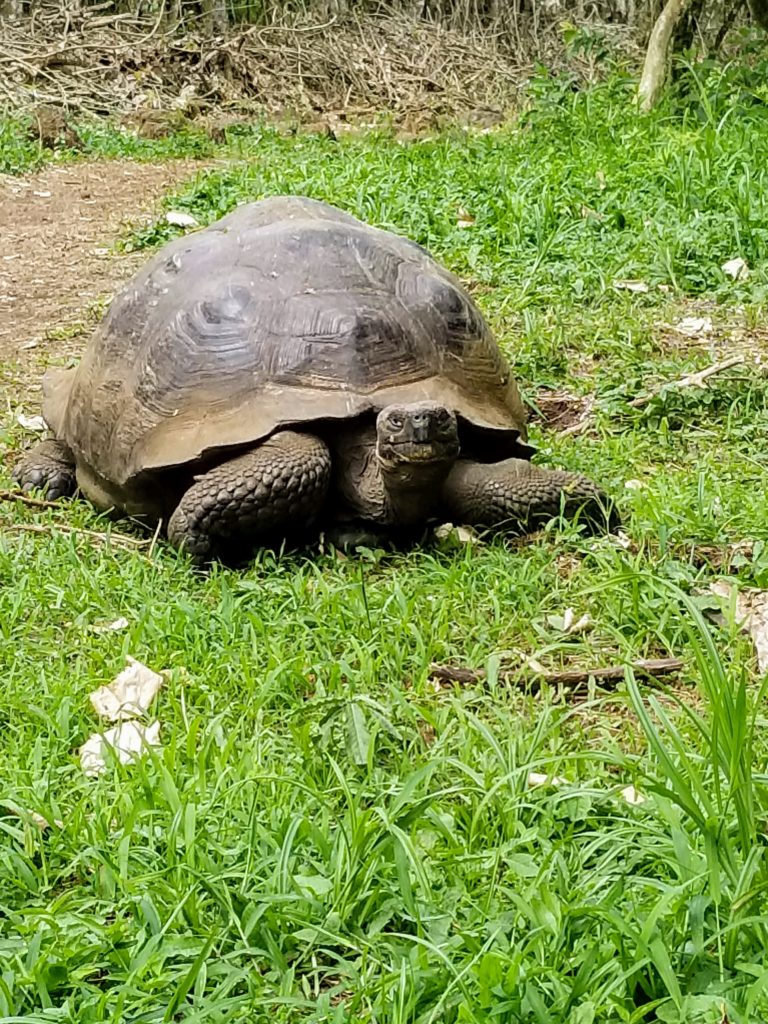
Checking out our group -
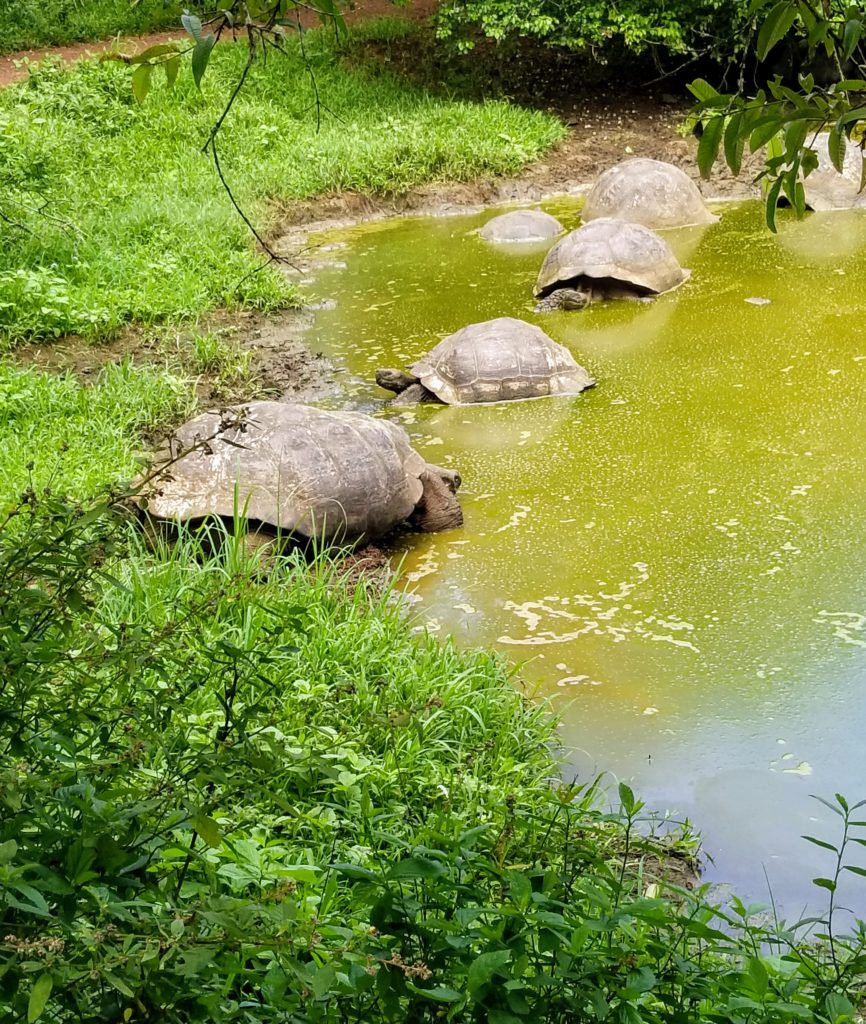
Group swim
The reserve had a giant lava flow that you could walk though. We saw a smaller version of this on our very first day. One of the first things we did was put on rubber boots (provided for us) so we could walk around the muddy areas. We also attended a briefing on the tortoises. In the picture above you can see the guide showing the underside of the tortoise. You can also get a sense of scale since the guide is a little under 6 ft tall.
We spent the remainder of the time touring around. There were dozens of giant tortoises, some alone but most in groups. Some were on dry ground, others were hanging out at the local swimming pond. They are incredibly slow and generally mute (they do groan when mating, as we heard). Once a few years old, they have no natural enemies as their size and hard shell make them impenetrable. Early humans used them as food and the many sailors that came were voracious hunters and eaters. Two specifies are already extinct, three are classified as "vulnerable," three more as "endangered" and 6 others are classified as "critically endangered." So the breeding grounds and restoration projects are crucial to saving the species.
Charles Darwin Center
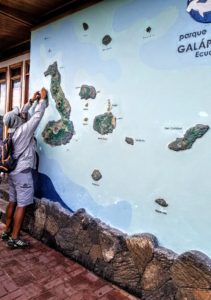
The afternoon we went to the Charles Darwin museum (Fausto Lleran Breeding and Interpretation Center). There was a large map of the Galapagos that our guide used to summarize the entire week.
The center does a regular island by island tortoise census. The most recent one showed a total of 1050 juveniles across 5 different islands (Floreana, Santiago, Santa Cruze, Pinzon and Espanola.) They have repatriated about 5500 tortoises across 11 Galapagos islands since 1970. The tortoises are repatriated back to their native islands in three or four years, depending on local conditions (dry or rainy).
-
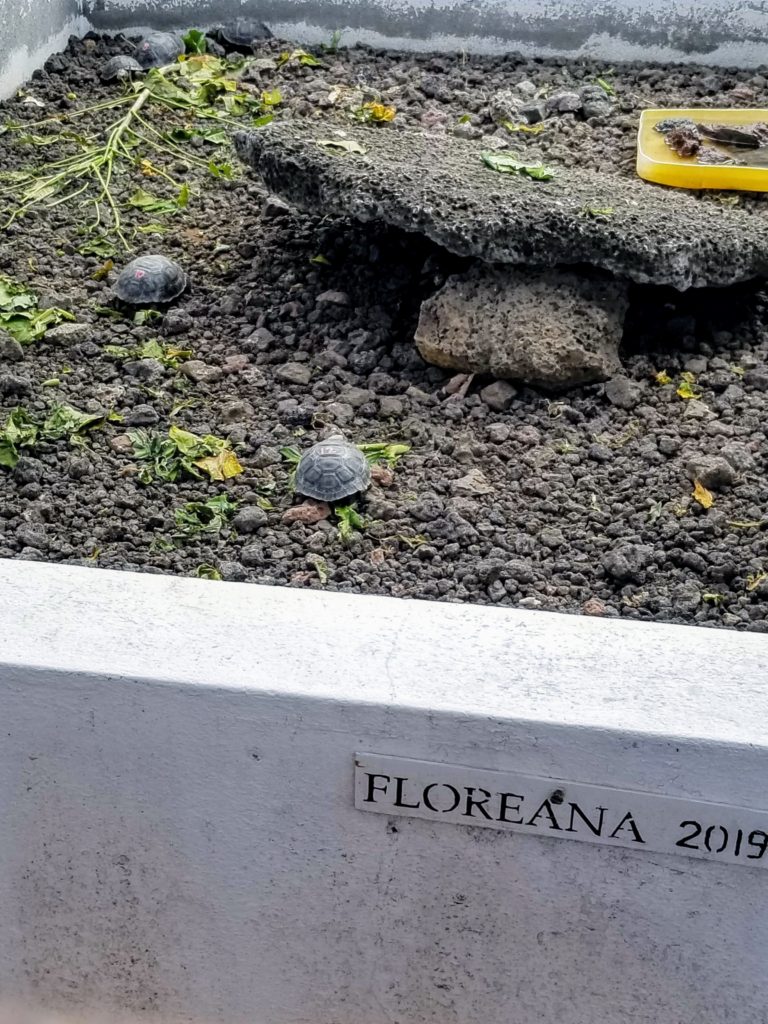
There's a pen for each island to keep the tortoises separate -
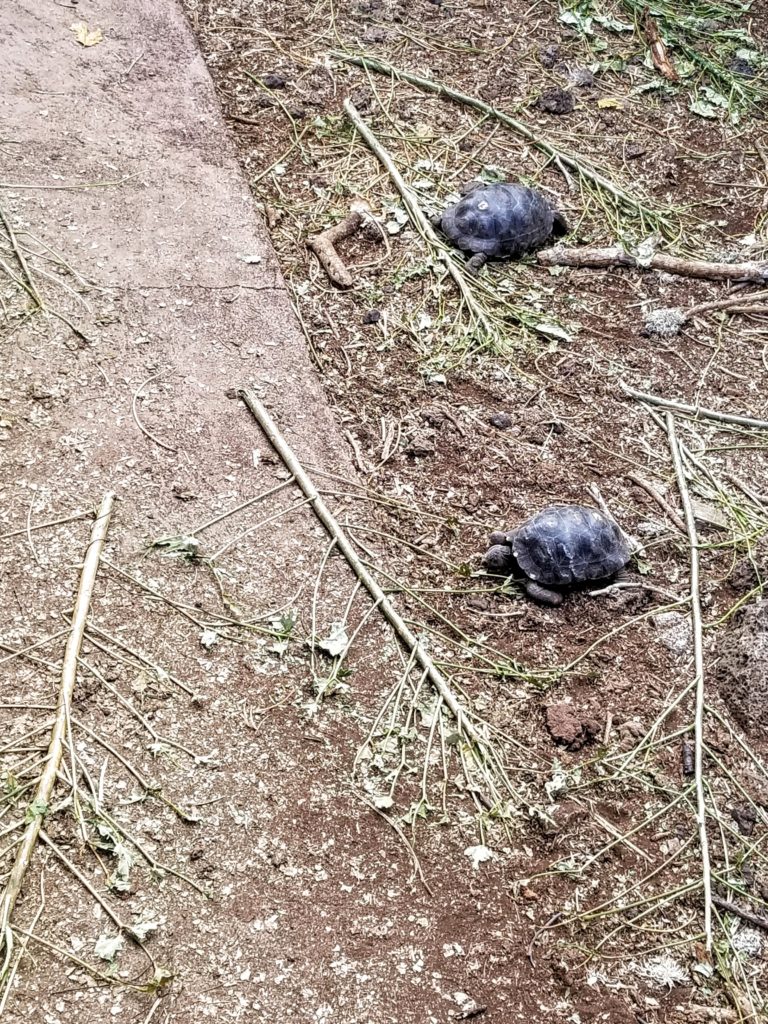
These tortoises are about 4 inches long
Lonesome George
After the tortoise breeding areas we entered the Lonesome George exhibit. Lonesome George was the sole tortoise of his kind (from Pinta Island) who had been in captivity at the center for many years. The center was trying to breed him to keep his gene pool alive. The many attempts failed however and he finally died in 2012 (he was over 100 years old). Our guide was working at the center at the time and said it was truly a period of mourning for many on the island (and around the world).
After his death, the Center installed an exhibit in his honor. George himself is displayed in an air conditioned case as shown below. You can read more about Lonesome George on the Galapagos conservancy website.
-
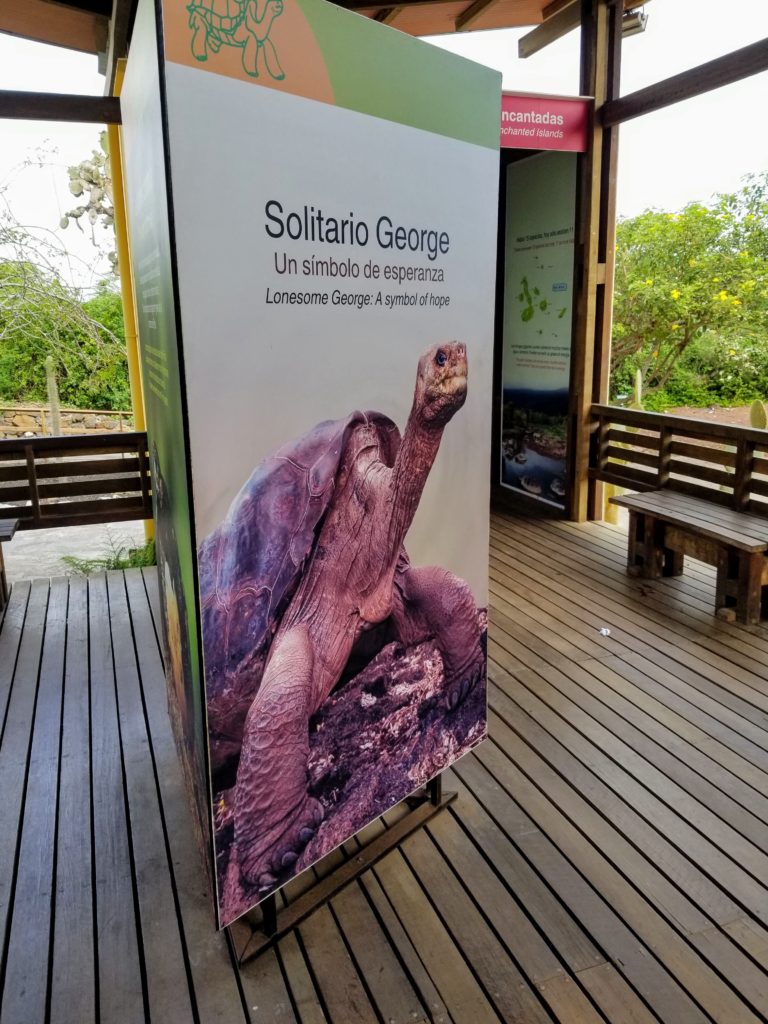
-
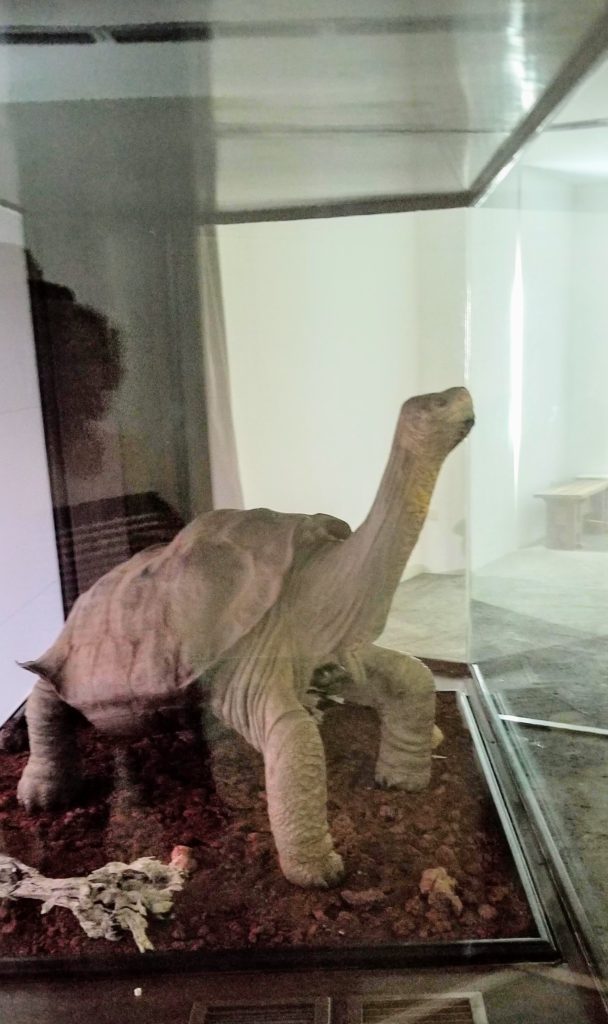
Lonesome George
Puerto Ayora - a real town
By this time it was very hot, very humid and time for our last night aboard. We walked through the little town of Puerto Ayora on our way back to the ship. It exists solely to support the tourism on the islands. Lots of nice little shops, restaurants and pubs and small inns. The locals were playing soccer and volleyball in the small park by the pier. We realized that this was the first and only actual town we had visited this past week.
In fact, our guide for the day was off that evening and had plans to see friends for dinner in town. The guides are basically independent contractors. We were extremely impressed with the ones Silversea hired and clearly they worked together before - all were veterans. Below are two of our favorite guides
Next: Our days in Quito Ecuador en route to the Galapagos.
